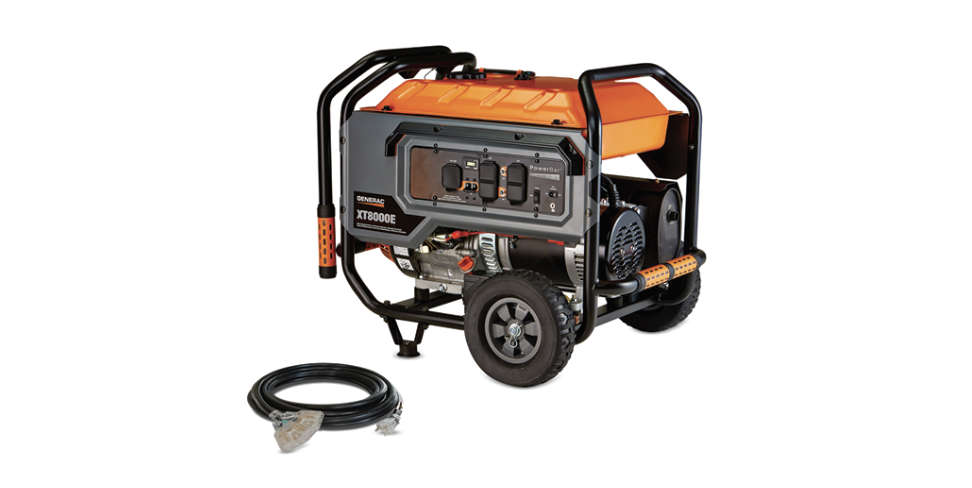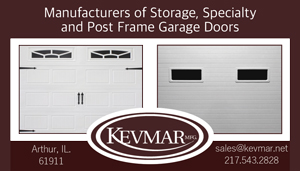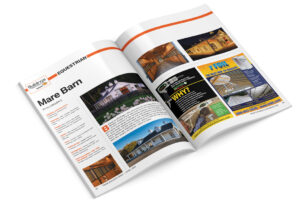The insurance coverage you need to protect your business
By Mark Battersby
Selecting the right type of insurance for your frame building business is only one factor every post-frame contractor must consider. Today’s low interest rates mean insurance companies aren’t earning much from their investments. That, in turn, means they must charge more for the insurance that is so essential to the operation of building business.
Amidst all the pressure on insurance companies to generate profits, how can any post-frame contractor hope to find affordable insurance? Unfortunately, finding an insurance company willing to insure the business almost renders the question of cost irrelevant. And there is also the question of what insurance does a builder or contractor need?
Basic Insurance
According to many experts, a basic business insurance package should consist of four fundamental types of coverage: workers’ compensation, general liability, auto, and property/casualty—plus an additional layer of protection called an “umbrella” policy.
Workers’ Compensation: Although nothing about insurance is easy, of the four types of insurance coverage, workers’ compensation comes closest to being a “no-brainer.” After all, laws in all 50 states require employers to maintain workers’ compensation insurance. What’s more, in most instances, the rates are established by the state.
To reduce the cost of this necessary insurance, do not accept the first price offered. Because no one wants to be classed as an explosives manufacturer if the business really involves construction, ensuring the business is categorized properly means it will be charged the appropriate rate. Another way to reduce the costs of workers’ comp is to take advantage of rate variances offered in many states. After a certain premium level (usually $5,000), employers can be rated based on history of claims. Naturally the fewer the claims, the lower the premium.
General Liability: Among the most confusing and misunderstood type of insurance, “General Liability” protects the business when negligent acts and/or omissions result in bodily injury and/or property damages on the premises of the business—or when someone is injured as a result of the products or services sold by the business.
With general liability, the best strategy is to determine how much coverage is actually needed. The old rule was that general liability insurance only needed to equal the business’s net worth. Unfortunately, that does not work anymore because people now sue based on the amount of the policy—and the operator’s net worth.
General liability insurance policies are built to meet the exact needs of a business, but post-frame contractors may want to consider two additional types of liability protection:
Builder’s risk insurance is a special type of insurance that protects against damage to buildings while they are under construction. In other words, it protects a contractor, builder, or building business’s insurable interest in materials, fixtures, and/or equipment being used in the construction or renovation of a building in the event those items sustain physical loss or damage.
This type of policy also protects against risks such as theft, earthquakes, government action, weather, and water damage or mechanical breakdown. Extended coverage is offered to protect temporary structures such as scaffolding, cover debris removal costs, or cover charges made by the fire department.
Contractor’s general liability insurance will cover risks regarding bodily injuries or property damage. It does not cover a contractor’s property or equipment, which falls under the “builder’s risk policy.” The policy is designed for a contractor’s specific liability coverage needs and protects against possible accidents and any liability arising from them. It protects those accused of causing injury or property damage as well as negligence. Most importantly, it assists with legal fees.
There are two extremes that a builder or contractor might want to consider with liability protection. The first, the so-called “empty pockets” approach, is to buy little or no insurance so as not to become a target of lawsuits. The other approach is to buy $2 million to $3 million of liability insurance—generally, the most needed.
Autos and Vehicles: Like workers’ compensation, auto and vehicle insurance is fairly straightforward. Even saving money is routine—simply increase the amount of the deductible.
Of course, cost cutting should not result in lower policy limits. Many states set minimum liability coverage, and those payouts may be well below what a business requires. If the business does not have enough coverage, the courts can take everything. Many experts suggest carrying a minimum of $1 million in liability coverage.
Property/Casualty: The majority of property insurance is written on an “all risks” basis as opposed to a “named peril” basis. The latter offers coverage for specific perils spelled out in the policy. If a loss occurs from a peril not named, then it is not covered.
For starters, most building operations should be covered by an “all risks” policy. Then go the extra step and carefully review the policy’s exclusions. All policies cover loss by fire. What about the losses from casualties such as hailstorms and explosions? Many businesses purchase coverage for all of these risks.
Whenever possible, “replacement cost” insurance should be purchased. This will replace the damaged property at today’s prices, regardless of the cost when the equipment or property was purchased. Naturally, total replacements should not exceed the policy cap.
Something “Extra”: In addition to these four basic types of insurance, many insurance professionals recommend an additional layer of protection, called an “umbrella policy.” This protects the operation from amounts in excess of its existing coverage or for liabilities not covered by other policies.
Going the Extra Mile: Business Interruptions
When a hurricane or earthquake puts a business out of commission for days (or worse, months), property insurance covers the damage. However, while property insurance will usually pay for the cost of repairs or rebuilding, who will pay for the income lost while the operation is unable to function?
For that, business interruption insurance generally provides enough to meet overhead and other operating expenses during the period when the operation is out of commission. In most cases, premiums for business interruption insurance are based on the operation’s annual income and may or may not cover the current pandemic-related closures.
Even better, a good “package policy,” bundled coverage offered as a package by insurance companies and brokers to those in specific fields or industries, usually covers business interruption. Packaged insurance policies can also offer so-called “errors and omissions” protection and even protection against cyber liability.
Cyber Liability and Credit Card Issues
Today, recognizing security threats and risks inherent in living in a digital world must be recognized. When a brick-and-mortar merchant accepts a credit card, the business will usually get paid even if a stolen card is used. But what about liability resulting from hacker attacks, viruses, and worms that steal or destroy a business’s data?
Typical business insurance policies usually cover only so-called “tangible” assets. Unfortunately, electronic data is not considered tangible under the typical policy definition. Fortunately, new cyber liability insurance policies are available today.
Cyber liability insurance protects a post-frame contractor for liability arising out of unauthorized use of, or unauthorized access to, the operation’s electronic data or software. Cyber liability policies also provide coverage for liability claims for spreading a virus or malicious code, computer theft, extortion, or any unintentional act, mistake, errors, or omissions made by employees while performing their job.
Employment Practices Liability Insurance
According to the Small Business Administration, three out of five employers face lawsuits filed by potential, current, and former employees every year. Admittedly, 75% of claims made by employees are dismissed, but defending against those claims can be quite costly.
Few frame building businesses are exempt from claims from disgruntled employees. Regardless of how hard a business tries to be completely fair, “politically correct,” or non-discriminatory, age and gender gaps all-too-often lead to miscommunication. A claim involving employment practices can happen to any business.
Employment practices liability insurance is a relatively new type of liability protection that protects the post-frame contractor or business from claims made by employees. In other words, business insurance for employment claims is ideal for today’s litigious world.
Managing Risk Exposure
Managing exposure to risks can mean assessing both the types of insurance necessary to protect the business as well as just what insurance the operation can afford. Too little insurance—carrying, for example, only the minimum amount of liability insurance on a vehicle that is required in your state—leaves you vulnerable. On the other hand, paying annual insurance premiums to protect the directors and officers in a family business may be bleeding cash from the operation.
Keeping insurance costs manageable, even in the face of escalating premiums, means shopping for competitive rates for the insurance coverages needed by the post-frame building operation. Taking the next step by actively managing the operation’s exposure to risk will further slash those insurance costs.
Choosing an insurance professional familiar with the industry and able to shape the insurance coverage needed—and keep it affordable—by the frame building business is essential. But the time to think about that insurance protection is now—not when it may be needed. FBN
























